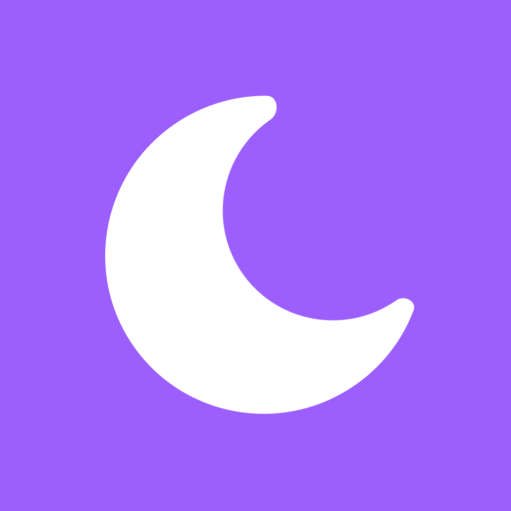Dreams have fascinated humanity for millennia, but only recently have scientists begun to unravel the complex relationship between our hormonal fluctuations and the dream world. For women, the menstrual cycle creates a unique monthly rhythm of hormonal changes that appears to significantly influence dream content, emotional tone, and recall. This article explores the fascinating connection between hormones, particularly those that fluctuate during the menstrual cycle, and the stories our sleeping minds create.
The Science Behind Hormones and Dreams
The menstrual cycle is characterized by dramatic shifts in key hormones—primarily estrogen and progesterone—that regulate reproduction but also affect brain function in numerous ways. These hormonal variations don’t just influence physical symptoms; they create measurable changes in mood, memory formation, and cognitive processing that extend into our dream experiences.
Research published in the Journal of Sleep Research indicates that women report more vivid, emotionally intense, and memorable dreams during specific phases of their menstrual cycle, particularly during the late luteal phase (just before menstruation) when hormone levels are rapidly declining.
Dream Content Across the Menstrual Cycle
Follicular Phase (Days 1-14)
As estrogen levels rise gradually during the first half of the cycle, women often experience dreams with themes of new beginnings and exploration. The emotional tone tends to be more positive and optimistic, with dream narratives typically less bizarre and more coherent than at other times. Interestingly, dream recall may actually be lower during this phase despite the pleasant content.
Dr. Jessica Payne, a neuroscientist specializing in sleep and memory, notes: “Rising estrogen levels support hippocampal function, which may lead to more coherent memory formation during dreams, even if recall upon waking is sometimes reduced.”
Ovulation (Around Day 14)
When estrogen peaks and luteinizing hormone surges around day 14, dreams often take a fascinating turn. Many women report dream content shifting toward themes of connection and romance. Research participants frequently describe dreams featuring encounters with unknown or unfamiliar characters, enhanced spatial awareness, and increased content related to sexuality and attraction. These dreams seem to mirror the biological readiness for reproduction that characterizes this phase.
Luteal Phase (Days 15-28)
The second half of the cycle tells a dramatically different dream story. As progesterone rises and both hormones eventually decline, dream content becomes noticeably more emotionally charged. Women frequently report an increase in dreams featuring anxiety, conflict, and threatening situations. The late luteal phase brings a particularly striking change: dream recall significantly improves, and bizarre and surreal elements increase in dream narratives.
The Premenstrual Dream Experience
The days just before menstruation deserve special attention, as this period shows the most dramatic dream alterations. Research from the Sleep Laboratory at the University of the West of England found that 40% of women report more negative dream emotions during the premenstrual period. More telling still, a study in the journal Dreaming documented a 25% increase in nightmares during the late luteal phase compared to other cycle phases.
This combination of increased dream recall and emotional intensity may serve an important psychological function. Dr. Sara Mednick, sleep researcher and author, suggests: “These vivid dreams might represent the brain’s attempt to process emotional memories under changing hormonal conditions.” Many women describe more surreal, unusual, or disjointed dream narratives during this phase—potentially reflecting the brain’s changing neurochemistry as hormone levels fluctuate.
Hormones, Memory, and Dream Formation
The link between hormones and dreams extends beyond content to the very mechanisms of dream formation and recall. Estrogen and progesterone receptors are abundant in brain regions critical for memory processing and emotional regulation, including the amygdala, hippocampus, and prefrontal cortex.
When hormone levels fluctuate, everything from neurotransmitter activity to brain activation patterns shifts. Memory consolidation processes alter, and emotional reactivity is modified. These changes affect not just how we feel while awake, but how our sleeping brain processes information.
Dr. Michael Breus, clinical psychologist and sleep specialist, explains: “These hormonal shifts affect how memories are filtered, processed, and incorporated into dreams. They essentially provide different ’emotional lenses’ through which the dreaming brain processes daily experiences.”
Practical Applications
Understanding the relationship between hormones and dreams offers several practical applications. Many women find that tracking dreams alongside cycle phases reveals personal patterns and provides insight into how hormonal fluctuations specifically affect individual dream experiences. This practice helps them better understand both their dreams and their physical and emotional experiences throughout their cycle.
For those experiencing mood disorders with premenstrual exacerbation, dream content may provide valuable therapeutic insights. Some cognitive-behavioral approaches now incorporate dream analysis specifically tailored to hormonal phases. Additionally, knowledge about how dreams change throughout the cycle can inform sleep hygiene practices. Women who experience more disturbing dreams premenstrually might benefit from relaxation techniques before bedtime during this phase.
Beyond the Menstrual Cycle
While the menstrual cycle provides a clear model for studying hormonal effects on dreams, similar influences appear in other hormonal transitions. The dramatic hormonal changes during pregnancy often lead to extraordinarily vivid and frequent dream recall, with content frequently focusing on maternal themes and anxieties. As reproductive hormones decline during menopause, many women report significant alterations in dream patterns, often including themes of transformation and identity. Similarly, individuals undergoing hormone replacement or hormonal contraception frequently report changes in dream experiences, further supporting the hormone-dream connection.
The Future of Dream Research
As neuroscience and sleep medicine advance, researchers are developing more sophisticated methods to study the hormone-dream relationship. Real-time hormone monitoring during sleep stages, brain imaging during REM sleep across menstrual phases, and AI-assisted content analysis of dream reports promise to deepen our understanding of how our biochemistry shapes our dreamscapes. These approaches may eventually inform personalized approaches to sleep health, emotional processing, and psychological well-being.
Conclusion
The compelling evidence linking hormonal fluctuations to dream content reveals yet another fascinating aspect of the mind-body connection. For women navigating the monthly hormonal journey of the menstrual cycle, dreams offer a unique window into how these biochemical changes influence the sleeping mind. By understanding these patterns, we gain valuable insights not just into the science of dreams, but into the complex interplay between our physical and psychological selves.
As research in this field continues to evolve, one thing becomes increasingly clear: our dreams are not merely random neural firings but are intricately connected to our biological rhythms, with hormones playing a crucial role in shaping the stories we experience while we sleep. The next time you wake from a particularly vivid or emotionally charged dream, consider where you might be in your hormonal cycle—your body’s chemistry may be telling you something through the language of dreams.






